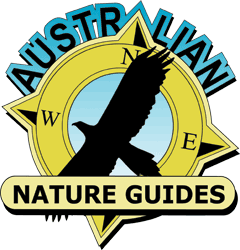Tracks and Trails
The Upper Gorge
Upper Gorge

Visiting all the sites in the Upper Gorge involves around 22 kilometres of walking, depending on how far up Boowinda Gorge you venture. If you walk in early and head out late, you should have a significant rest period between both legs of the walk, which will ease the stress on your legs. There are camping and toilet facilities at Big Bend and three sites to investigate.
The Main Track
Distance (one way): 9.6 km to Big Bend.
Track Class: 3-4. Easy to moderate walking along a mainly flat track. Numerous creek crossings and some staired sections. Rangers currently maintain formal stepping stone crossings below the Art Gallery, but above the Art Gallery, creek crossings are choose your own adventure.
Access: From Ranger Station.
Average Walking Time: Allow 2-3 hours one way at a moderate pace.
Beyond the Art Gallery turnoff, Carnarvon Gorge narrows considerably and the track becomes far less travelled. The Rangers no longer maintain formal creek crossings in this section of the Main Track, so it's choose your own adventure.
As the Gorge narrows, the cliff scenery gets more spectacular. Around 7.5km along the Main Track the creek is actively undercutting the cliffs and the creek bed transitions into vertical sandstone with little vegetation to block your view. That's the reward for all those extra kilometres.



The Main Track; a large part of the Carnarvon Gorge experience.
Big Bend

Access: Follows on from the Main Track.
Distance (one way): 560m from the end of the Main Track (9.6km from Ranger Station).
Track Class: 3. Easy walking, some rough terrain and close vegetation. Two unmarked creek crossings. Average Walking Time: Allow 10 to 15 minutes from the end of the Main Track (2.5-3 hours from Ranger Station).
In effect the track to Big Bend is a continuation of the Main Track, which technically ends at Cathedral Cave.
Big Bend is a campground located on a lovely bend in Carnarvon Creek. It is the only campground in the Gorge open all year round. The toilet facilities are accompanied by a limited number of flat campsites, which must be booked, and a picnic table.
The maintained track ends here, but walkers are permitted to explore further if they wish - providing a remote bushwalking form has been submitted to the Rangers as beyond this point walkers are off the track system.
Big Bend, Carnarvon Gorge.
Boowinda Gorge
Access: adjacent to Cathedral Cave.
Distance (one way): up to the individual, best of the side gorge is within the first 300 metres.
Track Class: in its native state. Take care on the potentially ankle-turning creek cobbles.
Boowinda is an indigenous word meaning 'thunder', and its worth remembering that fact as you explore its sinuous, smoothly eroded walls. The sandstone here has been carved into amazing shapes by some extreme flows of water. Therefore if you hear thunder when in Boowinda Gorge, it's time to leave as it is prone to flash flooding.
Boowinda Gorge has been carved by large flows of water.






Cathedral Cave
Distance (one way): 2m (9.6 km from Ranger Station).
Track Class: 2. Easy. Tiered boardwalk with some stairs.
Access: just before Boowinda Gorge.
Average Walking Time: Bugger all.
Cathedral cave lies at the end of the Main Track and the turn-off is only metres from the boardwalked site. Ample seating is provided along the multi-level boardwalk with interpretive signs pointing out key motifs. There are some motifs shared with the Art Gallery, such as the net patterns, but plenty unique to Cathedral Cave. See if you can find the stencilled rifle.
Based on archaeological evidence, Cathedral Cave was the main campsite for indigenous people using the Gorge whereas the Art Gallery appears to have been primarily ceremonial in nature. Cathedral Cave's massive overhang certainly provides more shelter in adverse weather than the comparatively shallow overhang at the Art Gallery.
When the Gorge was still being used as a cattle lease, Cathedral Cave was where cattle were coralled while the Gorge was being mustered. Unfortunately, the cattle damaged some of the rock art whilst penned in.



